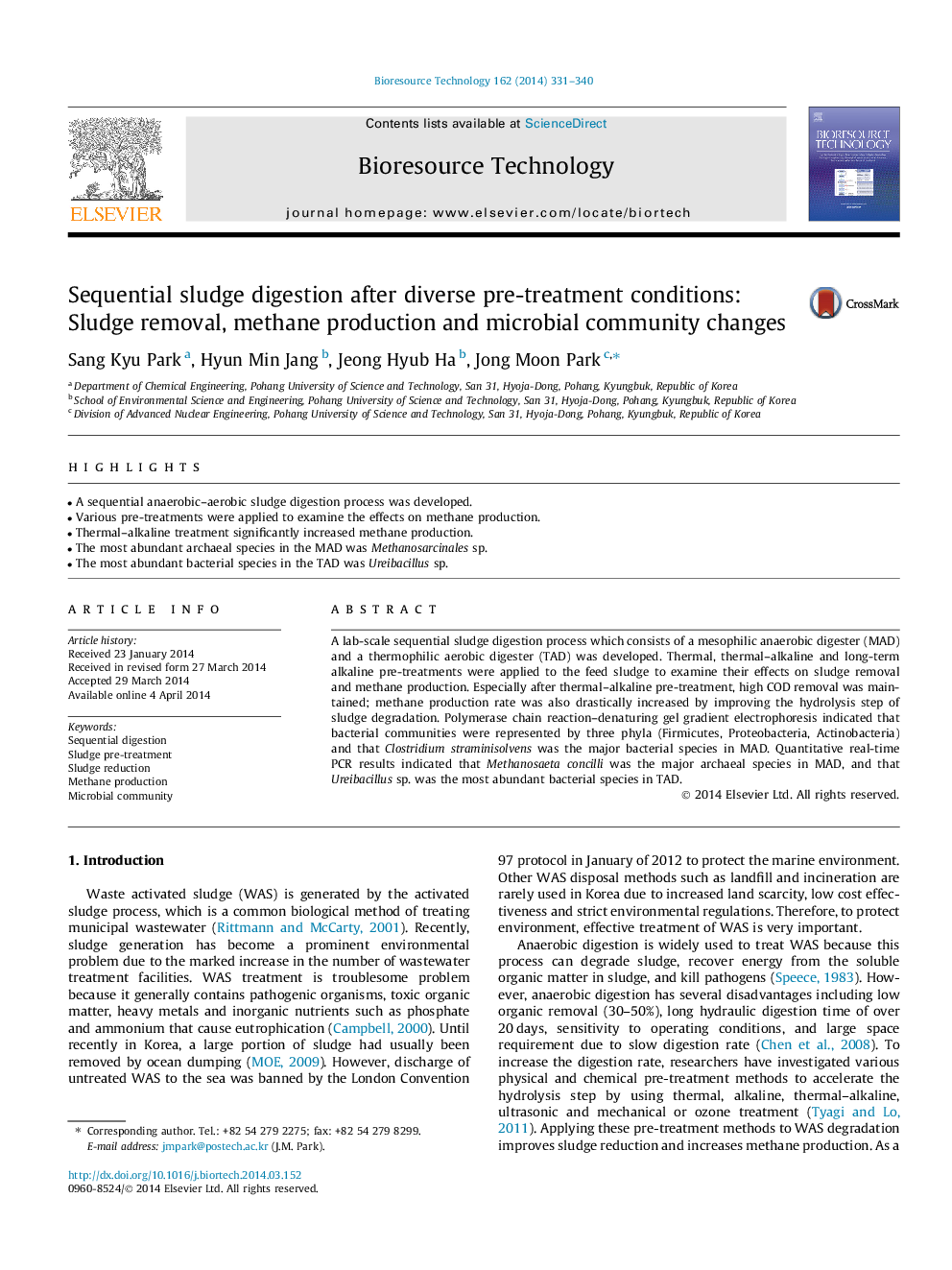| Article ID | Journal | Published Year | Pages | File Type |
|---|---|---|---|---|
| 7078109 | Bioresource Technology | 2014 | 10 Pages |
Abstract
A lab-scale sequential sludge digestion process which consists of a mesophilic anaerobic digester (MAD) and a thermophilic aerobic digester (TAD) was developed. Thermal, thermal-alkaline and long-term alkaline pre-treatments were applied to the feed sludge to examine their effects on sludge removal and methane production. Especially after thermal-alkaline pre-treatment, high COD removal was maintained; methane production rate was also drastically increased by improving the hydrolysis step of sludge degradation. Polymerase chain reaction-denaturing gel gradient electrophoresis indicated that bacterial communities were represented by three phyla (Firmicutes, Proteobacteria, Actinobacteria) and that Clostridium straminisolvens was the major bacterial species in MAD. Quantitative real-time PCR results indicated that Methanosaeta concilli was the major archaeal species in MAD, and that Ureibacillus sp. was the most abundant bacterial species in TAD.
Related Topics
Physical Sciences and Engineering
Chemical Engineering
Process Chemistry and Technology
Authors
Sang Kyu Park, Hyun Min Jang, Jeong Hyub Ha, Jong Moon Park,
